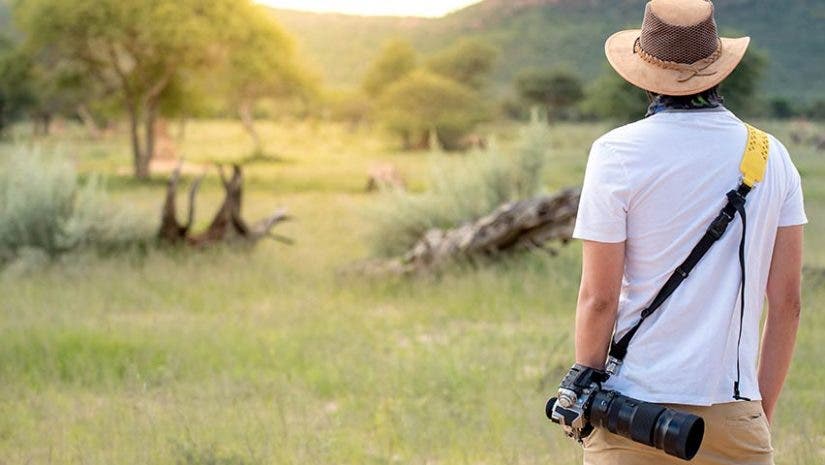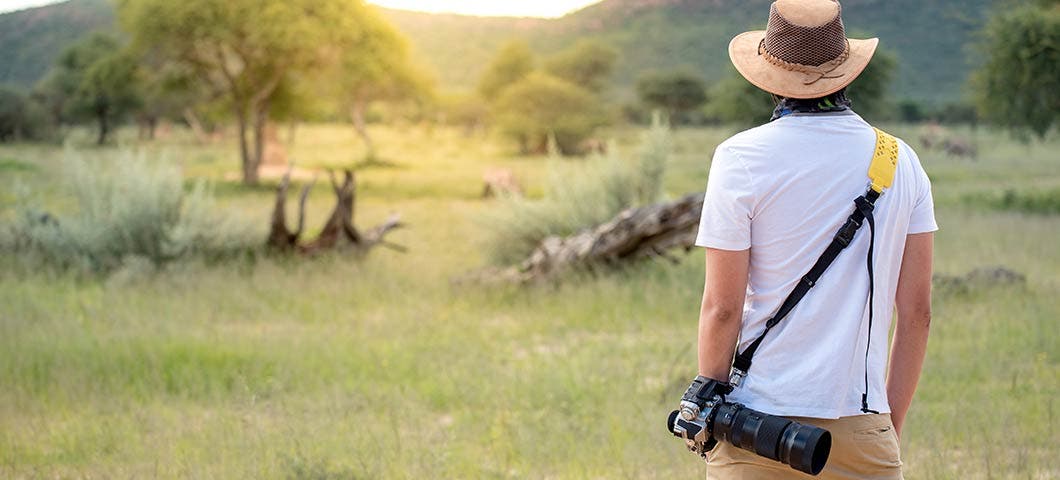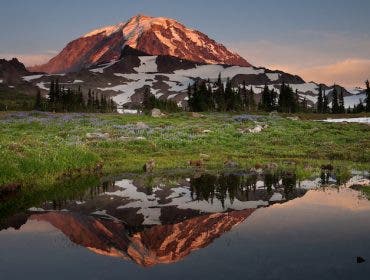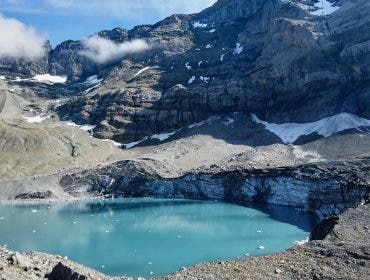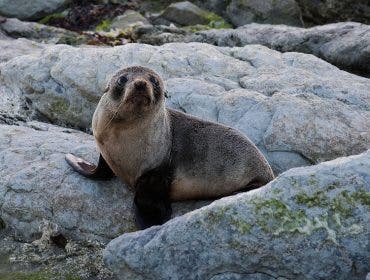Wildlife photography is one of the most challenging and popular types of photography out there. Whether you’re a beginner or a professional, it offers a wide range of subjects and exciting opportunities for skill growth mainly because your subjects can be very unpredictable and often keep you on your toes throughout the journey. That’s why you need a best camera for wildlife photography to help you capture it all.
As a wildlife photographer, you could be birdwatching, focusing on the intricate beauty of plants and insects, or hunting for snaps of big and small wild animals in their natural habitat. And with enough skill, experience, and the right equipment, you can produce stunning and very interesting results.
But before you can start searching — for a camera, that is — let us go over the main factors to consider so you can find one that will suit your needs and preferences in wildlife photography. In this guide we discuss the best cameras for wildlife photography.
The Best Camera Options for Wildlife Photography
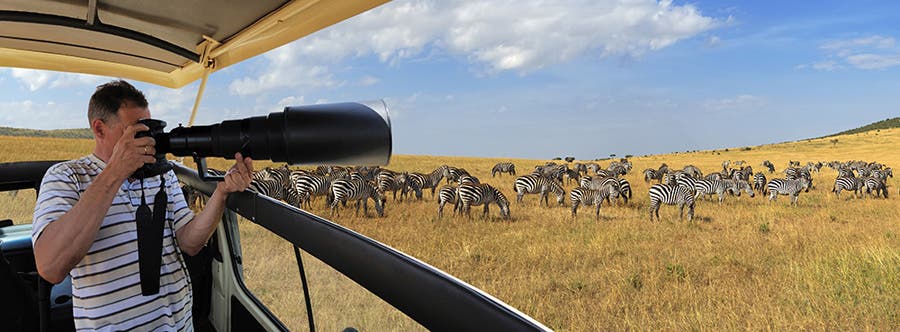
Now that you know what makes a good wildlife photography camera, we’ll recommend six of today’s best so you can soon start taking impressive and striking photos in the great outdoors.
Canon EOS R3 Mirrorless Camera Body
The Canon EOS R3 is Canon’s biggest release of the decade and their current flagship camera body. This body is built for the next-level wildlife photographers. Canon outdid themselves by adding the 30fps continuous shutter speed, as well as the eye, face, head and animal detecting AF. The Duel Pixel CMOS AF II system is highly responsive, letting the user continuously keep focus while capturing the subject. Canon really outdid themselves with this release.
- Check out a hands-on review of the Canon EOS R3 with Ab Sesay to see the camera in action.
Key Features:
- High Image Quality with a Back-illuminated Stacked 24.1 Megapixel Full-frame CMOS Sensor.
- DIGIC X Image Processor with an ISO range of 100-102400; Expandable to 204800.*
- High-speed continuous shooting of up to approx. 30 fps with electronic (silent) shutter and up to 12fps with Mechanical Shutter.
- Improved Dual Pixel CMOS AF with 1,053 AF Points
- The First EOS Digital camera to feature Eye Control AF.
- 5.76-million-dot & 120fps blackout free EVF with quick responseCapable of recording 6K 60P RAW or 4K 120p 10-bit
- Dual Card Slots for CFexpress and UHS-II SD Memory Cards.
- Dust and drip resistance equal to the EOS-1D X Series.
Nikon Z 9 Mirrorless Digital Camera Body
Nikon’s newest flagship camera offers a massive 45.7MP Stacked Sensor, 8k30p performance, and 30fps continuous shutter, making it very comparable to the other flagship cameras currently on the market. The blackout-free viewfinder makes sure that the user never misses a moment while giving realtime and AI-based subject detection. This camera produces professional level results and ensures you won’t miss a single moment while in the field.
- Read our hands-on review of the Nikon Z9 with Rod Mar for more information.
Key Features:
- 45.7MP FX-Format Stacked CMOS Sensor
- EXPEED 7 Image Processor
- 8K30p and 4K120p Video, 10-Bit Internal
- Up to 20 fps Raw, 30 fps JPEG Shooting
- 493-Point Phase-Detection AF System
- AI-Based Subject Detection and Tracking
- Blackout-Free Real Live Viewfinder
- 3.2″ 4-Axis Tilting Touchscreen LCD
- Vertical Grip, 2x CFexpress Type B Slots
Sony Alpha 1 Mirrorless Digital Camera
This compact beast of a camera is perfect for on-the-go wildlife photographers. It features the 50.1MP full frame sensor, being one of the best options for large scale printing. It also features one of the fastest shutters in the market, allowing up to 30fps continuous shooting. Real time Eye-AF tracks humans, animals, and birds giving you a variety of options depending on your subject that day. I can’t stress enough the importance of being able to quickly focus and maintain that focus in wildlife photography.
- Read the hands-on review of the Sony Alpha 1 with Mahesh Thapa for more.
Key Features:
- 50.1MP1 full-frame stacked Exmor RS CMOS sensor
- Next generation BIONZ XR image processing engine
- 50.1MP RAW+JPEG up to 30fps3 w/ 120 AF/AE calculations per sec.
- Blackout-free shooting up to 30fps from fast sensor readout speed
- World’s first 240 fps refresh rate, 9.44M dot 0.64” QXGA OLED EVF
- World’s first anti-flicker mechanical and electronic shutter
- Dual drive mechanical shutter for up to 1/400 sec. flash sync
- Real-time AF tracking, Real-time Eye-AF (humans, animals, birds)
Fujifilm X-T4 Mirrorless Digital Camera Body
This Fujifilm high-end system is the newest of their lineup. It is the sister model to the X-T3 but is host to a larger battery and in-body image stabilization. Although it is considerably compact and lightweight, it is equipped with a 26MP CMOS sensor which is pretty impressive. This body is great for both photo and video, featuring 20fps and 4k video up to 60p. Those specs matched with its compact design makes this camera a tiny but well-equipped body for professional level creators.
Key Features:
- 26MP BSI CMOS sensor
- In-body image stabilization (up to 6.5EV correction)
- 20 fps shooting with AF (15 with new mechanical shutter)
- 4K video (DCI or UHD) at up to 60p
- 1080 video at up to 240 fps, output as 4-10x slow-motion footage
- Fully articulated rear touchscreen
- 3.68M-dot OLED electronic viewfinder (up to 100 fps refresh rate)
- New NP-W235 battery rated to give 500 shots per charge
- Dual UHS-II card slots
- USB-C type connector allowing USB PD charging
- 12 Film Simulation modes, including Eterna Bleach Bypass
Canon EOS R6 Mirrorless Digital Camera Body
The EOS R6 is a more limited but budget friendly version of the R5 — but don’t let that fool you. This camera is a beast. Canon has revolutionized their image stabilization, giving this body 8 stops of shake correction. Subject tracking allows the user to track both a subject, as well as the eyes of a subject. You can choose to track either an animal or a person, making it easier to keep your subject in focus at all times. If you love Canon but you’re not willing to invest in the R5 price tag, this is the camera body for you.
Key Features:
- 20 Megapixel Full-frame CMOS Sensor.
- ISO range of 100-102400; Expandable to 204800.
- High-Speed Continuous Shooting of up to 12 fps with Mechanical Shutter and up to 20 fps Electronic (Silent) Shutter.
- Subject tracking of People and Animals
- 4K up to 60fps, 1080p up to 120fps 10-bit 4:2:2
- In-body Image Stabilizer
- Built-in 0.5” 3.69 Million Dots OLED EVF
- Dual UHS-II SD Memory Card Slots.
- Built-in Wi-Fi, Bluetooth Technology.
Nikon Z50 Mirrorless Camera Body
The Nikon Z50 is a tiny but powerful camera body. If you’re looking for an excellent beginner camera for wildlife, or maybe a backup camera, this is a great option. The camera is meant for Z mount lenses but is also compatible with the F mount adapter, allowing you to use F mount lenses as well.
Key Features:
- 20.9MP CMOS sensor
- Twin control dial interface
- Up to 11 fps
- 4K video at up to 30p
- 2.36M-dot OLED viewfinder
- Rear touch screen tilts up by 90° or down by 180°
- Bluetooth-enabled Wi-Fi
- Creative Picture Control effects
Olympus OM-D E-M1X Mirrorless Digital Camera Body
This flagship model from Olympus is pretty compact but still packed with technology. It holds one of the fastest shutters on the market, coming in at 60fps. Pro Capture mode activates the shutter while you focus so you won’t miss a single moment. Paired with 7.5EV stops of image stabilization, this camera is a beast for wildlife photographers. USB charging allows the user to charge the camera on the go, making it perfect for both landscape and wildlife photography.
Key Features:
- 20MP Four Thirds sensor
- 121-point autofocus system
- Hand-held high-res shot mode
- Up to 60 fps Raw + JPEG capture
- Pro Capture mode
- Up 7.5EV of image stabilization
- ‘Live ND’ multi-shot mode
- Dual BLH-1 batteries giving 870 shots per charge
- Dual UHS-II SD memory card slots
- UHD 4K/30p video and DCI 24p at up to 237Mbps
- IPX1-rated weather sealing
- USB charging
Are Nikons or Canons Better for Wildlife Photography?
While many photographers swear by one type of gear over another, there’s no definite winner in the Canon vs Nikon debate. When it comes to wildlife photography, the manufacturer of a camera is less important than the available features and lenses.
Both Canon and Nikon offer a wide range of cameras in a variety of formats. Whether you’re interested in a mirrorless camera, a full frame DSLR, or a crop-sensor DSLR, both brands have some great equipment to choose from. It’s a good idea to pay more attention to frames per second, resolution, and processing power than the name on the camera.
Are Mirrorless Cameras Good for Wildlife Photography?
Mirrorless cameras can be a great option for wildlife photographers. They’re often smaller and lighter, which is helpful when you consider the weight of other gear like the long telephoto lenses commonly used in wildlife photography. They also operate with a silent shutter, which can help you avoid detection.
The important things to pay attention to are battery life and performance reviews. If you intend to shoot in all sorts of weather and for long durations, it’s a good idea to find a well-reviewed mirrorless camera that is weather sealed and doesn’t eat up battery life while you’re waiting for your shot.
What to Look for in a Camera for Wildlife Photography: Most Important Features
When shopping for a camera for wildlife photography, it’s important to consider the full range of features you’ll need while shooting. Things like frames per second, sensor format, autofocus system, and ISO range are all important considerations. If you’ve narrowed down your list to several models, compare these specific features to find which one is best for you.
Sensor Size
Image quality always matters. You could have the best lens on but the sensor of the camera will certainly make all the difference. In wildlife photography, the size of the sensor is equally significant — more so than your choice of lenses — because it can affect how “close” you can get to your subject without actually moving.
The sensor is one of the most important parts of the camera for determining how much resolution and detail your photograph will have. While a full frame sensor has a larger field of view, a crop sensor will give your lenses a bit more reach in their focal length. Other formats have even smaller sensors, but full frame and crop are the most common.
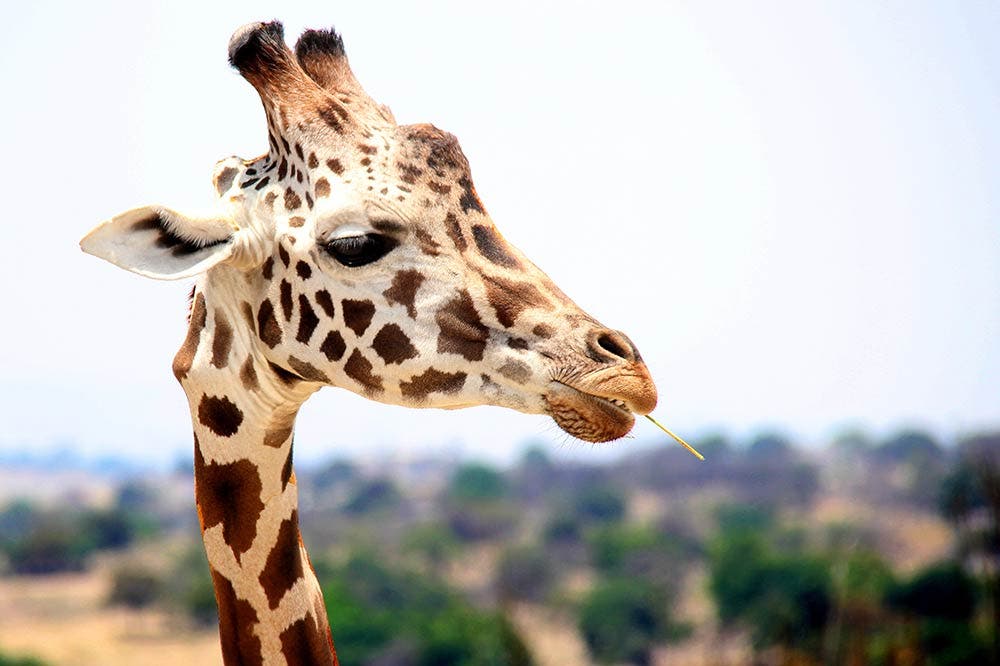
Crop Sensor
Here’s how it works: When you use the same zoom lens on a full-frame camera and an APS-C camera that is set to produce the same image resolution, the smaller APS-C sensor will offer a higher magnification and bump up your lens’ standard zoom range.
Full Frame
For professionals who want to retain the quality of their images straight from the camera, this means they won’t have to digitally crop their full-frame camera images (and lose image data) just to produce a slightly more “zoomed in” photo of a magnificent wildlife animal.
Another benefit of shooting with a smaller yet high-quality sensor is that it permits the use of lighter, more compact wildlife photography lenses. So for many photographers, the trade-off in overall image quality is negligible compared to the crop factor, affordability, and portability of a camera with a smaller sensor.
Autofocus Points
For wildlife photography, speed and accuracy are particularly important considerations. You’ll want your camera to be able to focus accurately and at incredibly fast speeds so your images will always turn out clear and sharp
It would also help to evaluate the autofocus system. Having more AF points could be an advantage since more information would be relayed to the AF processor for achieving more accurate focus, but newer and more powerful AF systems with few AF points could still outperform older systems with more AF points.
Other coveted AF features to watch out for are advanced focus-tracking and phase detection. Do note that the lenses you use could also affect the overall performance and availability of your AF points, so ones that will help make the most out of your camera’s AF system.
Other important AF Features to consider:
- Advanced Focus Tracking
- Phase Detection
Shooting Speed: Frames Per Second
You can’t expect most animals to stay still for long, so the higher number of frames per second will equate to better chances of you capturing the perfect split-second moment and expression. Aside from being able to achieve pixel-accurate focus in the shortest possible time, it could be very beneficial if the camera also has fast continuous capture rates—particularly when taking photos of fast-moving animals.
JPEGs are more forgiving of memory space so it fills your buffer slower than RAW files will, so check how many JPEGs it can capture in a second and make sure to complement your burst speed with a fast-rated memory card. This way, there’s a reduced chance of you missing that prime shot.
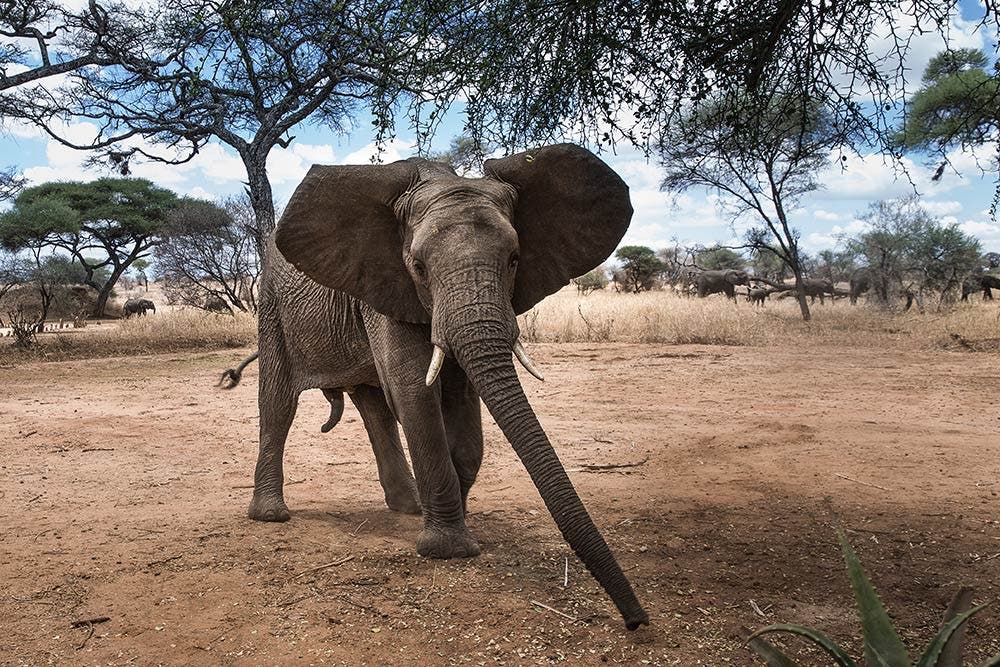
Low Light Capability: ISO Range
Wildlife photography often requires you to shoot in low-light conditions, particularly near dawn and dusk when animals are more active. This means you’ll need a camera with a higher ISO range.
For best results, choose a camera that offers a wide ISO range (like large sensor cameras) and has improved low-light performance that could result in somewhat cleaner images. And if it still turns out a little grainy upon closer inspection, remember that it’s better to have a lower-quality image than not get the shot at all.
